The Dorsey Brothers
Sultans of Swing
To fans of jazz and swing, the Dorsey brothers need no introduction. As musicians, composers and dance band leaders, they are inextricably linked with the swing craze during the big-band era of the 1930s and 1940s. Their numerous hits include “I’m Getting Sentimental Over You,” “I’ll Never Smile Again,” and “Boogie-Woogie.” In all, they sold a combined total of 110 million records in their forty-year careers.
Born to Thomas Frances Dorsey and Theresa Langton, the two brothers grew up in an Irish mining community in Pennsylvania. A self-taught musician himself, Thomas Dorsey resolved to keep his boys out of the mines, and instead ignited in them his own love of music. He even formed a band with them, the Way Back When Dorsey Brothers Orchestra. After Thomas Sr. quit the band, they became Dorsey’s Novelty Six, later to be renamed Dorsey’s Wild Canaries. The band performed throughout Shenandoah until they broke up in 1922 and Tommy and Jimmy joined the Scranton Sirens.
As boys, Tommy and Jimmy started out playing the cornet. Later they branched out to include other instruments. After two years with the Scranton Sirens, the brothers moved to the Jean Goldkette jazz band in Detroit, Michigan where they performed with jazz talents Bix Beiderbecke, Joe Venuti and Eddie Lang. Jimmy began playing the saxophone and clarinet, becoming one of the finest players of his day, while Tommy took up the trombone, coaxing from it a velvety tone that would become his trademark.
The Dorseys’ big break came in 1927 when the entire Goldkette band was hired by the Paul Whiteman Orchestra of New York City, bringing the Dorseys radio and recording jobs and performances with singers like Bing Crosby and the Boswell Sisters. In 1934, Tommy and Jimmy formed their own band, the Dorsey Brothers Orchestra, with Glenn Miller on second trombone. However, the band broke up only one year later, after a dispute broke out between the two brothers over tempo during a Memorial Day weekend performance. The more exacting and temperamental of the two, Tommy is generally blamed for the band’s demise. Over the next eighteen years, the two went their separate ways. Jimmy led the original Dorsey Brothers Band, renamed the Jimmy Dorsey Orchestra, while Tommy took over a band from Joe Haymes, turning it into the Tommy Dorsey Band, a more jazz-oriented band that featured Frank Sinatra from 1940-’42.
Over the next eighteen years, Tommy and Jimmy enjoyed tremendous success with their respective bands. Both brothers compiled a healthy list of film and television appearances, and they reunited temporarily for the making of the 1947 film bio The Fabulous Dorseys.
In 1953, Jimmy’s band fell apart and the brothers were reconciled. Jimmy joined Tommy’s orchestra and they performed as The Tommy Dorsey Orchestra featuring Jimmy Dorsey. The brothers performed together for the next three years, and from 1955-’56, the brothers enjoyed wide national coverage with their own show on CBS called Stage Show. The two brothers died within six months of each other, Tommy on November 26, 1956 and Jimmy on June 12, 1957. Two days before Jimmy died, he received a gold record for his greatest instrumental, “So Rare.”
George M. Cohan
Yankee Doodle Dandy
“I’m a Yankee Doodle Dandy / A Yankee Doodle do or die / A real live nephew of my Uncle Sam’s / Born on the Fourth of July.“
Songwriter, actor, playwright, and producer, George M. Cohan is most remembered as the Yankee Doodle Dandy, whose spirited music reflected and shaped the American mindset in the early years of this century.
His father Michael Keohane was born in County Cork and changed the spelling to Cohan when he came to America. Born July 3, 1878, in Providence, Rhode Island, George Cohan left school early and joined his parents’ vaudeville act, along with his sister. By age 11, he was writing sketches and, later, songs for the act known as “The Four Cohans.”
In his twenties, he started writing musical comedies for Broadway. Little Johnny Jones, performed in 1904, was his first success, and introduced the popular song “The Yankee Doodle Boy.” Two years later George had a hit with “George Washington, Jr.” and the debut of the routine he is most identified with — parading around stage while singing praise to an American flag he carries.
Cohan went on to produce more than 50 plays, revues, and comedies with partner Sam Harris. His songs include “You’re a Grand Old Flag” and “Give My Regards to Broadway.” Of his starting roles on Broadway, Cohan won particular acclaim for his role in Eugene O’Neill’s Ah, Wilderness!
Cohan’s biggest single song was written in 1917 as a patriotic tribute when the United States entered World War I. “Over There” earned him a Congressional Medal of Honor from President Franklin D. Roosevelt in 1940.
Married twice, Cohan died in New York City on November 5, 1942. His story was made into the film Yankee Doodle Dandy, starring James Cagney.
Bing Crosby
Crooner
“When Irish eyes are smiling . . .“
Gilbert Seldes, the famous arts critic, once pointed out, “There was a time, not so long ago, when it was truthfully said that no hour of the day or night, year after year, passed without the voice of Bing Crosby being heard somewhere on this earth.”
Bing Crosby was the consummate crooner. His smooth voice and relaxed, amiable manner easily beat all comers. And his eyes just seemed to ooze sincerity and romance — is it any wonder that he remains one of the best loved entertainers of the century?
Born Harry Lillis Crosby in Tacoma, Washington, Crosby descended from a long line of Irish immigrant stock. Nicknamed “Bing” after a character in the comic strip “The Bingsville Bugle,” he began singing as early as 1921, and in 1931 he won immediate fame with his own radio show. His inimitable style and appealing songs made him an international star, and he won several gold records throughout his career. His hit song “White Christmas” from the 1942 musical Holiday Inn remains the all-time best-selling single record.
He also made several Irish recordings, dedicating the song “Hardgan, That’s Me” to his maternal grandparents, Dennis and Katherine Harrigan, Irish emigrants both.
Crosby’s film career began with Max Sennett shorts, and as one of the Rhythm Boys in Paul Whiteman’s Orchestra in the 1930 King of Jazz. His Hollywood career was launched in 1932 with his starring role in The Big Broadcast.
Crosby’s characters were never great stretches from his own personality, and they were all the more appealing for that. As Seldes pointed out, he had “a sort of gentlemanly ease…an indifference to effect.” His natural style made him a delight to watch and his contribution to the musical and light comedy genre of films popular at the time was immeasurable. In 1936, he starred in the musicals Anything Goes (with Ethel Merman) and Pennies from Heaven (with Louis Armstrong). The Road to Singapore, starring that fabulous comic trio of Crosby, Bob Hope and Dorothy Lamour, was the most popular movie of 1940, and the series of “Road” films that followed became a part of the cinematic landscape of the forties. Two of Crosby’s most memorable roles were playing men of the cloth. In Going My Way (1944) he won an Oscar for his portrayal of an easygoing, singing priest who solved the problems of a poor parish. The following year, he starred with Ingrid Bergman in the film’s sequel, The Bells of St. Mary’s.
Crosby’s pleasing, family-oriented movies continued to be huge successes into the 1950’s, but after that, interest in this genre of film declined. After his last film, Stagecoach (1966), he turned his attention to television and personal appearances. He died in 1978 in perfect Crosby style — playing a relaxed game of golf.
Michael Flatley
Lord of the Dance
“You only have to look around you tot see what Irishmen are accomplishing all over the world. I grew up very proud of that and I’m still very proud of that. “
Critics struggle to outdo each other when it comes to superlatives to describe the dance maestro. “Truly great,” says one critic, “a master,” boldly proclaims another, while a third can only gasp, “[Flatley is] the centerpiece [of the show.]” And there’s more. Some years ago, National Geographic magazine described Flatley as a “national treasure.” These days, the description is more likely to be more of a global treasure, as Flatley’s Lord of the Dance continues to circumnavigate the world, playing to packed houses everywhere it stops.
One only has to look around at a Flatley show to see jaws drop as uncomprehending spectators wonder how two human feet can move so fast. How fast? Flatley has been recorded doing an astounding 28 taps per second, managing in the process to set a world record.
Formerly involved with Riverdance, until a dispute caused a parting of the ways, Flatley’s decision to set up Lord of the Dance was mocked by people who felt there was no room for a second stage show based on Irish dancing. In the first 18 months after Lord of the Dance debuted in Dublin’s Point Theater, the critics were noticeably silenced, and it was Flatley, by then a multi-millionaire, who ended up having the last laugh.
Two months after the show had opened, selling out night after night in Liverpool, Manchester and London, Flatley finally had the vindication he sought, and he described his brainchild enthusiastically to London’s Midweek Magazine. “Lord of the Dance is a big step forward for Irish dancing and music because for the first time it means that 50 or so Irish artists can make a living doing what they’re doing. And it’s completely different to anything that’s gone before,” he said.
The son of a Sligo-born construction worker, Flatley was born in Chicago in 1958. His mother is a native of Co. Carlow. He was comparatively old when he took up Irish dancing, and a teacher told him that 11 was really too late to start. His determination propelled him forward, however, and his perseverance paid off when he became the first American to win the All-World Championships in Irish Dancing.
Flatley has numerous other awards to his credit — he was the youngest ever recipient of a National Heritage Fellowship from President Ronald Reagan and the American National Endowment for the Arts recognized him as one of this country’s greatest performers. Dancing is not the only art form Flatley has mastered. He is also an accomplished flautist and a superb chess player. Swiftly sure-footed, he was also a Golden Gloves boxing champion in Chicago.
Gene Kelly
Song and Dance Man
“I got started dancing because I knew that was one way to meet girls.“
The name Gene Kelly conjures up the memorable image immediately: the rain-soaked young man with the smile as bright as a sunbeam, the twirling umbrella, the exuberant refrain. Along with fellow Irish American toe-tapper Donald O’Connor and Debbie Reynolds, Kelly made Singin’ in the Rain a musical movie to treasure.
Born August 23, 1913 in Pittsburgh, Eugene Curran Kelly was one of five kids, all of whom were sent to music and dance lessons. During the Depression, he and his siblings teamed up to form The Five Kellys, and he and his mother started a dancing school in Pittsburgh.
During a 1990 interview with Irish America, Kelly said he treasured his Irish roots (he had immigrant ancestors on both sides, with his mother’s father having come from Co. Clare) and had named his own two daughters Kerry and Bridget. He also referred to the Irish domination of popular dance as “a phenomenon of the time,” and added, “I think it came from the fact that the dancing in Ireland for centuries had been clog dancing and reels and these dances certainly influenced the American people in the late 19th and 20th centuries so that it actually became part of American tap dancing.”
Having put himself through university by means of his dancing, Kelly decided that this was how he wanted to make his living. He got his first break on Broadway in the Rodgers and Hart musical Pal Joey. From there Hollywood beckoned and he made a total of 43 movies, playing alongside such stars as Judy Garland, Rita Hayworth, Leslie Caron and Cyd Charisse. As well as singing and dancing, he choreographed his own movies and directed some of them. In 1969, he directed Barbra Streisand and Walter Matthau in Hello Dolly. His work on An American in Paris won him a special Academy Award for choreography. In 1980, Kelly won the Cecil B. DeMille Award. He died in 1996.
Francis O’Neill
Musical Cop
“To illustrate the wealth of graces, turns and trills with adorn the performance of capable Irish pipers and fiddllers, skillful both in execution and improvisation, is beyond the scope of musical notation.“
The survival of many of the old Irish dance tunes is thanks in large part to Cork native Francis O’Neill’s tireless work as a collector and publisher of Irish music.
In 1918, O’Neill, a police chief in Chicago, wrote anxiously to a friend in Ireland, expressing his fear for the future of Irish music in America. “Few of our people care a snap for Irish music,” he wrote. “The poor scrub who graduated from the pick and shovel and the mother who toiled for many years in some Yankee kitchen will have nothing less for Katie and Gladis or Jimmy and Raymond but the very latest.” It was all part of a new desire to shed the old and adopt the newest trends of their adopted land, but thankfully O’Neill’s fears turned out to be unfounded and Irish music is more popular than ever in this country.
Born near Bantry, Co. Cork in 1849, O’Neill was raised with a love of music and he was an accomplished traditional flute player. Visiting musicians dropped into the family home regularly, and O’Neill once remarked that he never forgot a tune or song he heard.
Leaving home at the age of 16, O’Neill worked on the ships, and ended up in San Francisco. He later moved to Chicago, where he joined the police force, rising to Chief of Police in 1901. His passion for Irish music never deserted him, however, and he often helped traditional musicians find work as cops.
Along with his friend and fellow officer James O’Neill, he set about collecting tunes. James was able to write music, and transcribed the tunes that Francis played for him. Other musicians then came on board, and their tunes were also recorded. When the collection reached almost 2,000 pieces, the decision was made to publish the material, and it appeared in 1903 as The Music of Ireland. Four years later, a second collection appeared, The Dance Music of Ireland: 1001 Gems. That volume soon became known as O’Neill’s 1001.
An active member of the Chicago Music Club, O’Neill was also a staunch supporter of the Gaelic League, which he saw as a means to keep traditional Irish music and culture alive in America.
Editor’s Note: This article was originally published in the November 1999 issue of Irish America. ⬥

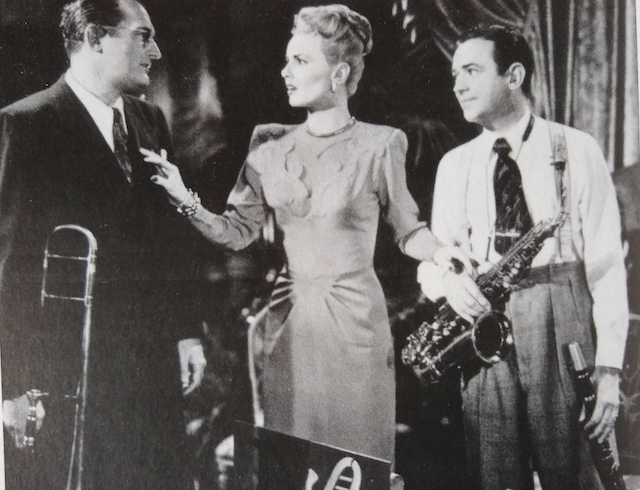
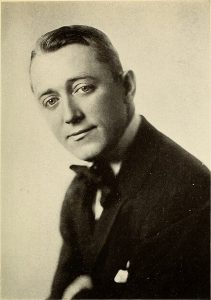
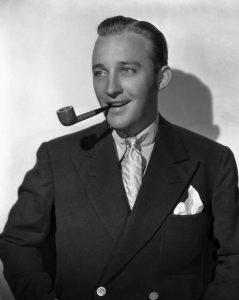
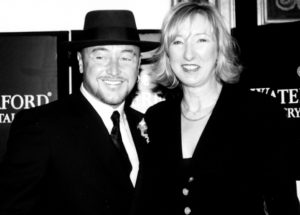
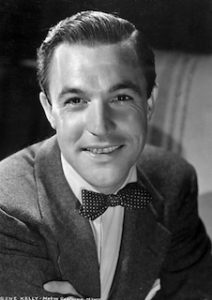
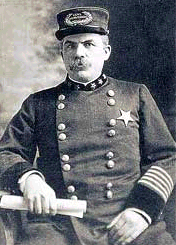
Leave a Reply